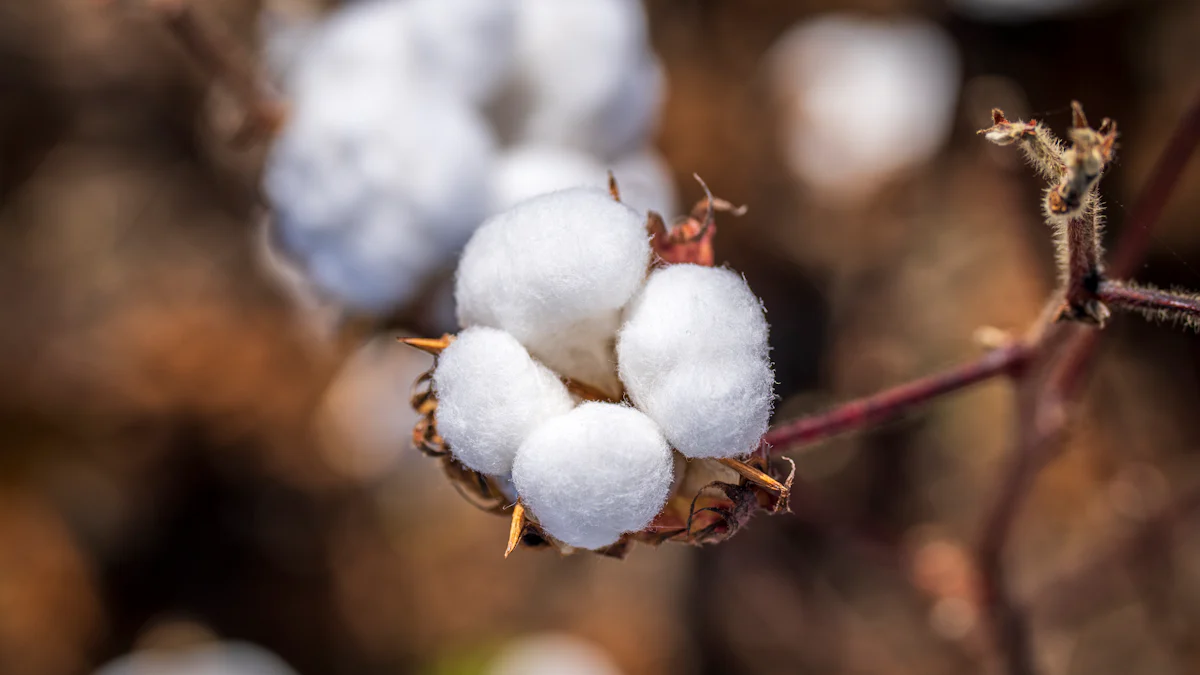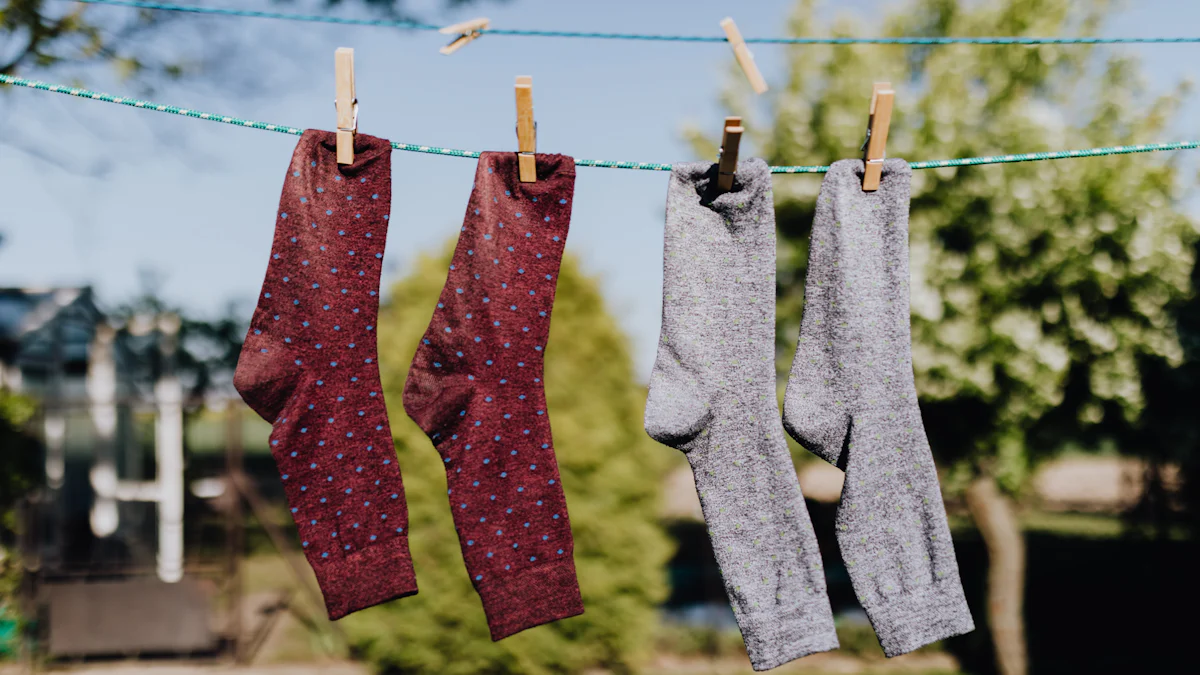
Choosing the right socks significantly impacts foot comfort and overall well-being. Cotton vs wool socks present distinct advantages that cater to different needs. Cotton socks offer lightweight breathability, ideal for gym workouts and daily activities. Wool socks, particularly Merino wool, excel in moisture-wicking, odor resistance, and temperature regulation. Understanding these differences helps in selecting the most comfortable option.
Cotton vs Wool Socks: Material Properties

Cotton
Natural Fiber
Cotton socks use natural fibers derived from the cotton plant. These fibers provide a soft and comfortable feel. The natural composition makes cotton socks hypoallergenic, reducing the risk of skin irritation.
Breathability
Cotton socks excel in breathability. The fibers allow air to circulate freely, keeping feet cool. This feature makes cotton socks ideal for warm weather and casual activities.
Softness
The softness of cotton socks enhances comfort. The gentle texture feels pleasant against the skin. This quality makes cotton socks a popular choice for everyday wear.
Wool
Merino Wool
Merino wool stands out among wool types. This wool comes from Merino sheep, known for their fine and soft wool. Merino wool socks offer superior comfort and performance.
Insulation
Wool socks provide excellent insulation. The fibers trap heat, keeping feet warm in cold conditions. Wool retains its insulating properties even when wet, making it suitable for outdoor adventures.
Moisture-Wicking
Wool socks excel in moisture-wicking. The fibers draw moisture away from the skin, keeping feet dry. This property helps prevent blisters and discomfort during extended wear.
Cotton vs Wool Socks: Comfort Factors
Temperature Regulation
Cotton in Warm Weather
Cotton socks excel in warm weather due to their breathability. The natural fibers allow air to circulate, keeping feet cool. This feature makes cotton socks a popular choice for summer activities and casual wear.
Wool in Cold Weather
Wool socks, particularly those made from Merino wool, provide superior insulation. The fibers trap heat, ensuring feet stay warm in cold conditions. Wool retains its insulating properties even when wet, making it ideal for outdoor adventures and winter sports.
Moisture Control
Cotton’s Absorbency
Cotton socks absorb moisture quickly. This characteristic can lead to damp feet, which may cause discomfort and blisters. Cotton’s inability to wick moisture away from the skin makes it less suitable for high-intensity activities or prolonged wear.
Wool’s Moisture-Wicking Ability
Wool socks, especially Merino wool, excel in moisture-wicking. The fibers draw moisture away from the skin, keeping feet dry and comfortable. This property helps prevent blisters and reduces the risk of fungal infections, making wool socks ideal for active lifestyles.
Odor Control
Cotton’s Tendency to Retain Odor
Cotton socks tend to retain odor due to their absorbent nature. Moisture trapped in the fibers creates an environment where bacteria thrive, leading to unpleasant smells. Frequent washing is necessary to maintain freshness.
Wool’s Natural Odor Resistance
Wool socks offer natural odor resistance. The fibers inhibit bacterial growth, keeping feet fresh even after extended wear. This quality makes wool socks a preferred choice for long hikes and multi-day trips.
Cotton vs Wool Socks: Durability and Maintenance

Cotton
Wear and Tear
Cotton socks tend to wear out more quickly compared to wool socks. The fibers in cotton lack the resilience found in wool, making them prone to holes and thinning over time. Frequent use, especially in high-stress activities, accelerates this wear and tear. Cotton socks may not withstand the rigors of intense physical activities or prolonged wear.
Washing and Care
Proper care can extend the life of cotton socks. Gentle washing with mild detergent helps maintain the integrity of the fibers. Avoiding high heat during drying prevents shrinkage and fiber damage. Storing cotton socks in a cool, dry place reduces the risk of mildew and odors. Regular maintenance ensures that cotton socks remain comfortable and functional for daily use.
Wool
Longevity
Wool socks, particularly those made from Merino wool, offer superior durability. The natural elasticity of wool fibers allows them to bend and stretch without breaking. This resilience contributes to the longevity of wool socks, making them a reliable choice for outdoor adventures and extended wear. Wool socks can endure harsh conditions while maintaining their shape and comfort.
Special Care Instructions
Wool socks require specific care to maximize their lifespan. Washing wool socks gently with a mild detergent preserves the natural fibers. Avoiding high heat during drying prevents shrinkage and maintains the softness of the wool. Storing wool socks in a cool, dry place protects them from pests and moisture. Following these care instructions ensures that wool socks provide lasting comfort and performance.
Cotton vs Wool Socks: Cost and Availability
Cotton Socks
Price Range
Cotton socks generally fall within an affordable price range. Most cotton socks cost between $5 to $15 per pair. Budget-friendly options often provide decent quality for everyday use. Premium cotton socks, featuring higher thread counts or specialized designs, may cost slightly more.
Market Availability
Cotton socks enjoy widespread market availability. Retailers, both online and offline, stock a variety of cotton socks. Major department stores, supermarkets, and specialty shops offer extensive selections. The high demand for cotton socks ensures that consumers can easily find them in various styles and sizes.
Wool Socks
Price Range
Wool socks, particularly those made from Merino wool, tend to be more expensive. Prices typically range from $15 to $30 per pair. The higher cost reflects the superior qualities of wool, including durability, moisture-wicking, and odor resistance. Premium brands may charge even higher prices for advanced features and craftsmanship.
Market Availability
Wool socks are readily available but may not be as ubiquitous as cotton socks. Outdoor and specialty stores often carry a wide selection of wool socks. Online retailers also provide numerous options, catering to different needs and preferences. The growing popularity of wool socks among outdoor enthusiasts and athletes has increased their availability in recent years.
Recapping the key points, cotton socks offer lightweight breathability and softness, making them suitable for casual wear and warm weather. Wool socks, particularly Merino wool, excel in moisture-wicking, odor resistance, and temperature regulation, providing superior comfort and durability.
The final verdict favors wool socks for overall comfort due to their advanced properties. Wool socks outperform cotton socks in various conditions, including outdoor activities and extended wear.

